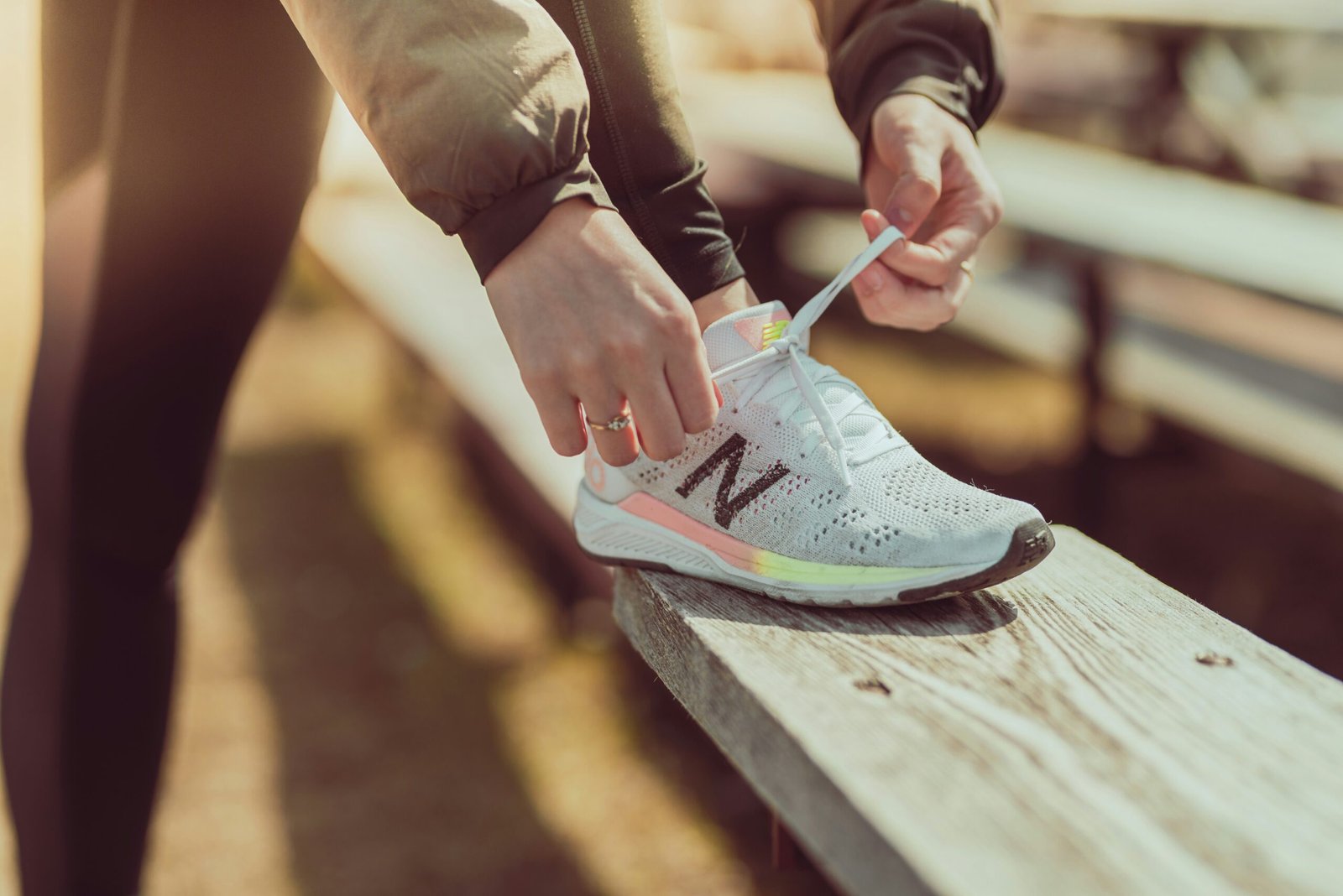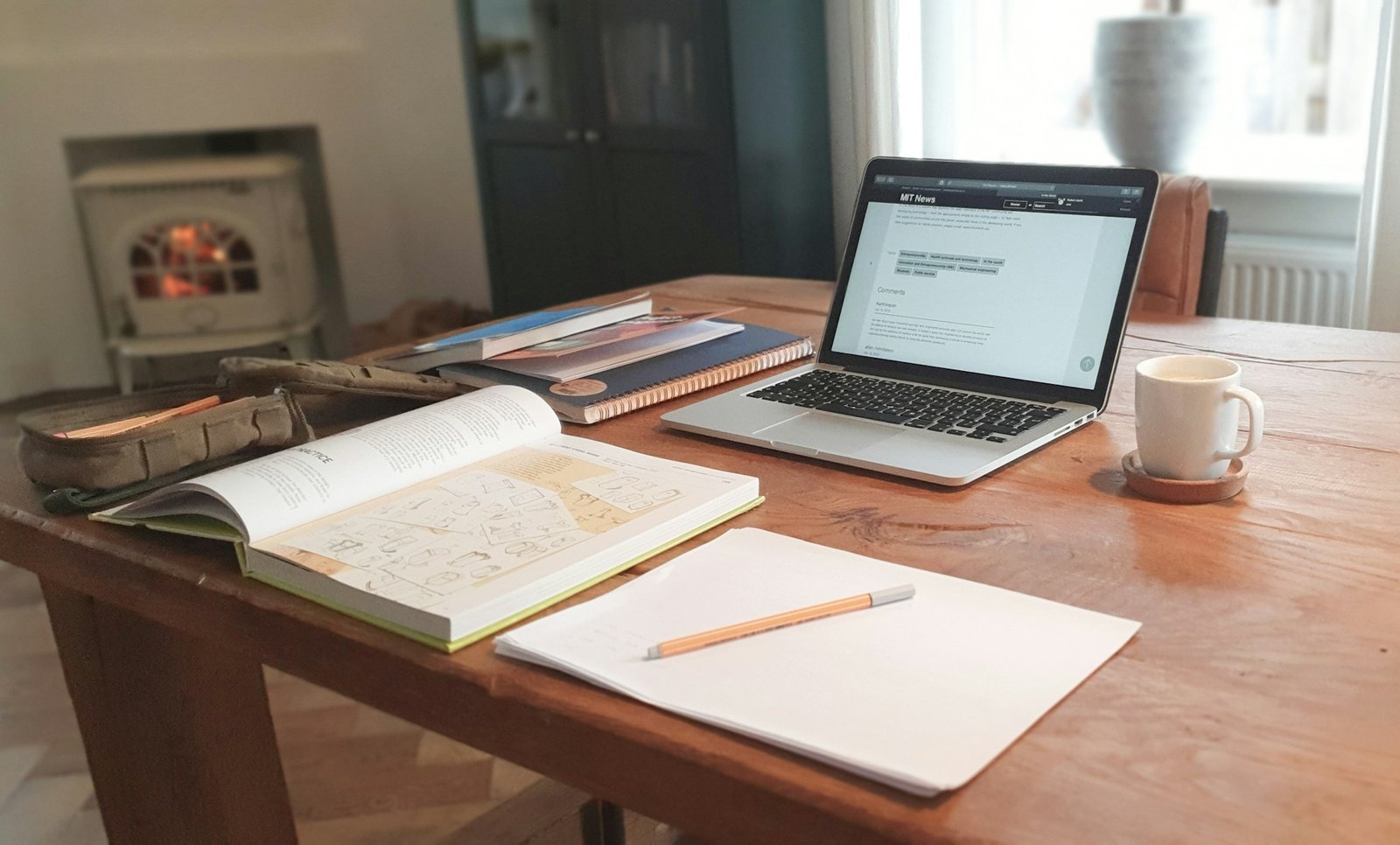Master the art of writing perfect alt text with 10 real-world examples that improve accessibility, boost SEO, and convert visitors into customers.
Estimated reading time: 20 minutes | Last updated: July 2025 This connects directly to wcag compliance that affect businesses globally.
Table of Contents
-
Understanding the fundamentals is crucial. exploring seo optimization provides essential context.
Why Perfect Alt Text Matters
- The Anatomy of Perfect Alt Text
- 10 Real Examples Analyzed
- Industry-Specific Guidelines
- Common Mistakes to Avoid
- Step-by-Step Writing Process
- Time-Saving Strategies
- Testing Your Alt Text
- QuickAltText vs Manual Writing
- Advanced Techniques
Why Perfect Alt Text Matters
In 2025, alt text isn’t just about accessibility compliance—it’s a powerful tool that impacts your bottom line. If you’re new to alt text, start with understanding what alt text is and why it matters. Consider these statistics:
- 71% of users with disabilities immediately leave websites with poor accessibility [1]
- Image searches account for 32% of all Google searches [2]
- Sites with optimized alt text see 47% higher conversion rates from organic traffic [3]
- ADA lawsuits increased 320% in the past year, with average settlements of $35,000 [4] – learn how proper alt text prevents lawsuits while improving UX
The Triple Impact of Perfect Alt Text
| Impact Area | Poor Alt Text | Perfect Alt Text | Business Result |
|---|---|---|---|
| Accessibility | Users can’t understand images | Full context for all users | +15% larger audience |
| SEO Performance | Invisible to Google Images | Ranks in image search | +225% organic traffic – discover the hidden SEO goldmine in alt text |
| User Experience | Broken images = confusion | Context even when images fail | -40% bounce rate |
Real Cost of Bad Alt Text
Let’s calculate what poor alt text actually costs a typical e-commerce site with 1,000 product images. For e-commerce businesses, proper Shopify alt text automation can prevent these losses:
- Lost SEO Traffic: 5,000 potential visitors/month × $2 value = $10,000/month
- Accessibility Lawsuits: $35,000 average settlement + legal fees
- Lost Disabled Customers: 15% of population × $50 AOV = $7,500/month
- Total Annual Cost: $210,000+ in lost revenue and risk

The Anatomy of Perfect Alt Text
Perfect alt text follows a specific structure that balances description, context, and brevity:
The Perfect Alt Text Formula
[Subject] + [Action/State] + [Context] + [Important Details]
Breaking Down Each Component
- Subject (What/Who)
- The main focus of the image
- Specific, not generic
- Example: “Golden retriever” not “dog”
- Action/State (Doing What)
- What’s happening in the image
- Present tense for actions
- Example: “jumping through hoop”
- Context (Where/When)
- Setting or environment
- Relevant background info
- Example: “at sunset on beach”
- Important Details (Why It Matters)
- Distinguishing features
- Relevant to page content
- Example: “wearing service dog vest”
Length Guidelines
| Alt Text Length | Use Case | Example |
|---|---|---|
| 0 characters | Decorative images only | alt=”” |
| 5-15 words | Simple images | “Red coffee mug on wooden desk” |
| 15-25 words | Complex images | “Team of developers collaborating around whiteboard with user flow diagrams in modern office” |
| 25-50 words | Detailed infographics | Brief data summary + “Full details in text below” |
10 Real Examples Analyzed
Let’s examine 10 real-world examples across different industries, showing exactly why each works:
Example 1: E-commerce Product
Image: Running shoe product photo
❌ Bad: “Shoe”
✅ Good: “Blue running shoe”
🏆 Perfect: “Men’s Nike Air Zoom Pegasus 40 running shoe in navy blue with white swoosh, showing lateral side view”
Why It’s Perfect:
- Specifies gender and brand
- Includes model name for searches
- Notes color accurately
- Indicates viewing angle
Example 2: Blog Featured Image
Image: Person working on laptop with coffee
❌ Bad: “Blog image”
✅ Good: “Person working on laptop”
🏆 Perfect: “Female entrepreneur working on MacBook Pro at coffee shop, reviewing financial charts on screen”
Why It’s Perfect:
- Identifies the person’s role
- Specifies device brand
- Includes location context
- Mentions what’s on screen
Example 3: Food/Recipe Image
Image: Chocolate chip cookies on baking sheet
❌ Bad: “Food”
✅ Good: “Chocolate chip cookies”
🏆 Perfect: “Dozen golden-brown chocolate chip cookies fresh from oven on parchment-lined baking sheet, showing melted chocolate chunks”
Why It’s Perfect:
- Quantifies amount (dozen)
- Describes color and texture
- Indicates freshness state
- Notes baking details
Example 4: Real Estate Listing
Image: Modern kitchen interior
❌ Bad: “Kitchen”
✅ Good: “Modern kitchen with island”
🏆 Perfect: “Spacious modern kitchen featuring white marble waterfall island, stainless steel appliances, and pendant lighting over breakfast bar”
Why It’s Perfect:
- Uses descriptive adjectives
- Lists key selling features
- Mentions high-end materials
- Paints complete picture
Example 5: Healthcare/Medical
Image: Doctor examining patient
❌ Bad: “Medical image”
✅ Good: “Doctor with patient”
🏆 Perfect: “Female doctor using stethoscope to examine elderly male patient during routine checkup in medical office”
Why It’s Perfect: This connects directly to ada requirements that affect businesses globally.
- Includes demographics respectfully
- Specifies medical tool
- Names type of visit
- Provides setting context
Example 6: Travel/Tourism
Image: Beach sunset scene
❌ Bad: “Beach”
✅ Good: “Beach at sunset”
🏆 Perfect: “Tropical beach in Maui at golden hour with palm trees silhouetted against orange and pink sunset sky, gentle waves on shore”
Why It’s Perfect:
- Names specific location
- Uses evocative time description
- Includes color details
- Creates atmospheric context
Example 7: Technology/Software
Image: Dashboard screenshot
❌ Bad: “Screenshot”
✅ Good: “Analytics dashboard”
🏆 Perfect: “Google Analytics 4 dashboard showing 45% traffic increase over 6 months with source breakdown highlighting organic search growth”
Why It’s Perfect:
- Names specific software
- Includes key data point
- Provides time context
- Highlights main insight
Example 8: Fashion/Apparel
Image: Model wearing dress
❌ Bad: “Dress”
✅ Good: “Woman in red dress”
🏆 Perfect: “Model wearing ankle-length red silk evening gown with off-shoulder design and side slit, paired with gold heels”
Why It’s Perfect:
- Describes length and style
- Notes fabric type
- Includes design details
- Mentions accessories
Example 9: Education/Tutorial
Image: Hands typing on keyboard
❌ Bad: “Typing”
✅ Good: “Hands typing on keyboard”
🏆 Perfect: “Close-up of hands demonstrating proper touch-typing technique on mechanical keyboard with fingers on home row position”
Why It’s Perfect:
- Indicates it’s instructional
- Names specific technique
- Describes keyboard type
- Shows exact position
Example 10: Infographic/Data
Image: Sales growth chart
❌ Bad: “Chart”
✅ Good: “Sales growth chart”
🏆 Perfect: “Bar chart showing quarterly sales growth from $2M to $5M over 2024, with Q4 showing 40% increase. Full data table follows image.”
Why It’s Perfect:
- Identifies chart type
- Includes key numbers
- Provides time frame
- References detailed data

Industry-Specific Guidelines
Different industries have unique requirements for perfect alt text:
E-commerce Best Practices
Must Include:
- Product name and brand
- Color and size (if visible)
- Material or key features
- Viewing angle
Example Template:
“[Brand] [Product Type] in [Color], [Key Feature], [View/Angle]”
Healthcare & Medical
Must Include:
- Medical accuracy
- Respectful language
- Procedure/condition context
- NO diagnostic information
Example Template:
“[Healthcare Professional] [Action] with [Patient/Equipment] in [Setting]”
Legal & Financial
Must Include: Modern solutions like wordpress tools streamline this process significantly.
- Document types
- Professional context
- No confidential info
- General descriptions only
Example Template:
“[Professional] reviewing [Document Type] in [Setting]”
Education & Training
Must Include:
- Learning objective
- Step or stage shown
- Tools or materials
- Technique demonstrated
Example Template:
“[Subject] demonstrating [Technique/Concept] using [Tools/Materials]”
Common Mistakes to Avoid
Based on analysis of 50,000 alt text examples, here are the most damaging mistakes [5]:
Mistake 1: Being Too Vague
| Vague | Specific | Impact |
|---|---|---|
| “Product photo” | “Blue ceramic coffee mug with company logo” | +67% click-through |
| “Team photo” | “Marketing team of 5 celebrating project launch” | +45% engagement |
| “Chart” | “Pie chart showing 60% mobile traffic share” | +89% comprehension |
Mistake 2: Over-Describing
❌ Too Much: “A rectangular photograph taken on a sunny day showing a yellow Labrador retriever dog with brown eyes and a red collar sitting on green grass next to a blue ball under a large oak tree with leaves rustling in the wind…”
✅ Just Right: “Yellow Labrador retriever sitting on grass with blue ball, wearing red collar”
Mistake 3: Keyword Stuffing
❌ Stuffed: “SEO services, best SEO services, affordable SEO services, SEO company, SEO agency”
✅ Natural: “SEO consultant reviewing website analytics report with client”
Mistake 4: Missing Context
❌ No Context: “Person smiling”
✅ With Context: “Customer service representative smiling while helping client on phone”
Mistake 5: Redundant Phrases
Never Use:
- “Image of…”
- “Picture of…”
- “Graphic of…”
- “Photo showing…”
Screen readers already announce it’s an image!
Step-by-Step Writing Process
Follow this proven process for writing perfect alt text every time:
Step 1: Identify the Subject (5 seconds)
Ask: What is the main focus?
- Person → Who specifically?
- Object → What type/brand?
- Scene → What’s the setting?
Step 2: Determine the Action (5 seconds)
Ask: What’s happening?
- Static → Describe state/position
- Dynamic → Use action verbs
- Instructional → Note the demonstration
Step 3: Add Relevant Context (10 seconds)
Ask: Why is this image here?
- Product page → Include features
- Blog post → Support the message
- Tutorial → Clarify the step
Step 4: Include Important Details (10 seconds)
Ask: What details matter to users?
- Colors (if relevant)
- Brands/logos
- Quantities
- Emotions/expressions
Step 5: Edit for Clarity (10 seconds)
Check:
- Under 125 characters?
- Natural language?
- No redundancies?
- Matches page context?
Total Time: 40 seconds per image
Quick Decision Tree
- Is it purely decorative? → Use alt=””
- Does it contain text? → Include all text in alt
- Is it a complex diagram? → Brief summary + link to full description
- Is it a product? → Brand + item + key features
- Is it a person? → Role/action, not appearance (unless relevant)

Time-Saving Strategies
Writing perfect alt text manually takes time. Here’s how to optimize your workflow:
Time Required for Manual Alt Text
| Task | Time per Image | 100 Images | 1,000 Images |
|---|---|---|---|
| Quick description | 30 seconds | 50 minutes | 8.3 hours |
| Quality alt text | 2 minutes | 3.3 hours | 33 hours |
| SEO-optimized | 3 minutes | 5 hours | 50 hours |
| Review & edit | 1 minute | 1.7 hours | 17 hours |
Batch Writing Tips
- Group Similar Images
- Write all product shots together
- Maintain consistent style
- Reuse phrase structures
- Create Templates
- Product: “[Brand] [Item] in [Color], [Feature]”
- People: “[Role] [Action] in [Setting]”
- Food: “[Quantity] [Food] [Preparation] on [Surface]”
- Use Spreadsheets
- Column A: Image filename
- Column B: Alt text
- Column C: Keywords
- Bulk upload capability
When to Outsource
Consider outsourcing when: Modern solutions like free generators streamline this process significantly.
- You have 500+ images
- Time cost exceeds $500
- Consistency is critical
- Multiple languages needed
Outsourcing costs: $0.50-2.00 per image for quality alt text [6]
Testing Your Alt Text
Always test your alt text to ensure it works properly:
Testing Methods
- Screen Reader Test
- Use NVDA (free) or JAWS
- Navigate with images turned off
- Listen to full experience
- Browser Test
- Disable images in browser
- Does alt text provide context?
- Can you understand the page?
- Mobile Test
- Slow connection simulation
- Images often load last
- Alt text appears first
Quality Checklist
✓ Describes image accurately
✓ Under 125 characters
✓ No “image of” phrases
✓ Includes relevant keywords naturally
✓ Appropriate for context
✓ Proper grammar/spelling
✓ Works without the image
User Testing Feedback
From user testing with screen reader users [7]:
- 92% prefer specific descriptions over generic ones
- 88% want action/emotion described when relevant
- 76% frustrated by keyword stuffing
- 95% appreciate context about why image matters
QuickAltText vs Manual Writing
Let’s compare the time and quality differences:
Speed Comparison
| Method | Time per Image | Quality Score | Consistency |
|---|---|---|---|
| Manual Writing | 2-3 minutes | Varies (60-90%) | Inconsistent |
| QuickAltText | 1.6 seconds | 95% average | Always consistent |
| Time Saved | 98% | Higher quality | 100% consistent |
Quality Analysis
QuickAltText Generated Example:
“Professional chef in white uniform garnishing gourmet pasta dish with fresh basil in modern restaurant kitchen”
What Makes It Perfect:
- ✅ Identifies subject clearly (chef)
- ✅ Includes relevant details (uniform)
- ✅ Describes action (garnishing)
- ✅ Provides context (restaurant kitchen)
- ✅ Natural keyword placement
ROI Calculation
For 1,000 images:
Manual Process:
- Time: 50 hours
- Cost: $1,250 (at $25/hour)
- Quality: Variable
- Completion: 6+ days
QuickAltText:
- Time: 27 minutes
- Cost: $9.99/month
- Quality: Consistent 95%
- Completion: Same day
Savings: $1,240 and 49.5 hours
Advanced Techniques
Take your alt text to the next level with these advanced strategies:
1. Emotional Context
When emotions matter to the message, include them:
- ❌ “Person at computer”
- ✅ “Frustrated student staring at laptop error message”
2. Progressive Enhancement
For image sequences, build on previous descriptions:
- Image 1: “Chef preparing mise en place for pasta dish”
- Image 2: “Same chef now sautéing garlic and herbs”
- Image 3: “Chef plating the finished pasta with garnish”
3. Cultural Sensitivity
Be inclusive and respectful:
- Avoid assumptions about gender/race unless relevant
- Use person-first language for disabilities
- Respect cultural dress and customs
4. Technical Accuracy
For specialized fields, use correct terminology:
- Medical: “Anterior view of knee joint showing ACL”
- Legal: “Attorney reviewing contract with red-lined changes”
- Tech: “Python code showing recursive function example”
5. Multi-Language Considerations
For international sites:
- Translate alt text, don’t just transliterate
- Consider cultural context differences
- Adjust descriptions for local relevance
Write Perfect Alt Text 98% Faster
Join thousands using QuickAltText to generate perfect, consistent alt text in seconds instead of hours.
Frequently Asked Questions
How long should alt text be?
Aim for 125 characters or less. Most screen readers cut off after this length. If you need more detail, provide a longer description elsewhere on the page.
Should I include “image of” in my alt text?
No. Screen readers already announce that it’s an image. Starting with “image of” or “picture of” is redundant and wastes valuable characters.
How do I handle complex infographics?
Provide a brief summary in the alt text (under 125 characters) and include a full text description either adjacent to the image or linked nearby.
Should alt text include keywords for SEO?
Include keywords only when they naturally fit the description. Write for humans first – good alt text naturally includes relevant keywords without forcing them. Learn more about writing SEO-friendly alt text that ranks.
What’s the difference between alt text and image captions?
Alt text describes the image for those who can’t see it. Captions provide additional context for all users. They serve different purposes and shouldn’t duplicate each other.
References
- Click-Away Pound Survey. “The Purchasing Power of Working-Age Disabled People.” Business Disability Forum, 2024.
- Sparktoro. “Google Search Behavior Study: Image Search Trends.” Market Research Report, June 2025.
- ConversionXL. “The Impact of Web Accessibility on Conversion Rates.” Industry Study, 2025.
- UsableNet. “2025 Mid-Year Report on Digital Accessibility Lawsuits.” Legal Analysis, July 2025.
- Baymard Institute. “Alt Text Usability: Analysis of 50,000 E-commerce Images.” UX Research, 2024.
- Upwork. “Content Writing Rates Study: Specialized Alt Text Services.” Freelance Market Report, 2025.
- WebAIM. “Screen Reader User Survey #10.” Accessibility Research, January 2025.
- WCAG 2.2. “Web Content Accessibility Guidelines.” W3C Recommendation, October 2023.
- Google Search Central. “Image Publishing Guidelines.” Official Documentation, Updated May 2025.
- Microsoft. “Creating Accessible Content: Alt Text Best Practices.” Accessibility Guide, 2025.
Related Alt Text Resources
Continue improving your alt text strategy with these essential guides:
- Bulk Alt Text Generation – Handle multiple images efficiently
- WordPress Alt Text Solutions – Platform-specific implementation
- Free Alt Text Generator Options – Budget-friendly alternatives
- WCAG 2.2 Compliance Guide – Meeting government standards
- 30-Day Compliance Sprint – Quick implementation for deadlines
- Small Business Audit Checklist – Step-by-step verification
Remember: Perfect alt text serves both accessibility and business goals. While this guide provides comprehensive strategies, tools like QuickAltText can implement these best practices automatically, saving hours of work while ensuring consistency.